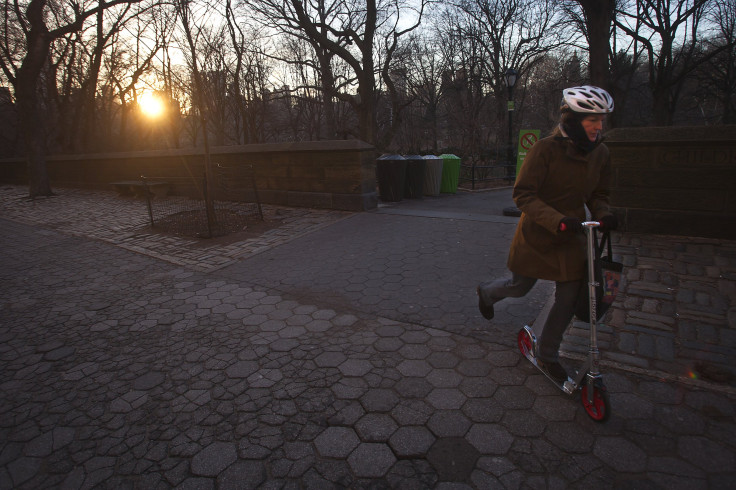How To Stay Healthy In The City: Take 2 Doses Of Nature, Call The Doctor In the Morning

The majority of the earth’s population lives in an urban setting with estimates placing the exact proportion at 54 percent, a figure that is expected to climb to 70 percent within three decades.
Since continued urbanization will expose more people to the health risks of city living, a group of biologists and public health experts say it is time to develop a precise knowledge of how nature influences health outcomes.
Once the health effects of nature have been quantified based on quality, quantity, frequency, and duration of exposure, doctors might prescribe their ailing urban patients a "dose" of nature just as they would prescribe a drug.
"Dose–response modelling, when a dose of nature is modeled against a health response, could provide a key method for addressing this knowledge gap," wrote the authors of a new study initiated by Dr. Danielle F. Shanahan, a postdoctoral research fellow at Fuller Lab.
The researchers highlight the need to "move beyond simplistic measures of nature dose" so that "urban nature can be manipulated to enhance human health." So, how exactly do you measure a dose of nature?
Intensity, Frequency, Duration
Exposure to nature, the researchers say, can best be compared to exposure to physical activity. In calculating the benefits of exercise, scientists focus on three key components: intensity, frequency, and duration. To adapt these three elements to nature, then, you would look at the intensity of exposure to nature (how much), the frequency of exposure (how often), and the duration of exposure (how long).
To measure intensity, the researchers say quality and quantity must be considered. In the past, ecologists have counted the number of trees on a street or calculated the percentage of vegetation cover in a neighborhood to represent quantity of nature. Quality, though, is much more difficult, with past studies counting the wealth of bird species or number of habitats. "Conceivably, other measures of nature quantity, such as leaf area indices, could also be employed in a dose-response context," the authors wrote, explaining that this measurement links directly to the biophysical ecosystem — vegetation, after all, can regulate heat and this has a direct impact on our human physiology and so, too, our health.
Frequency, the researchers say, is more easily measured by the number of times a person is exposed to nature during a particular time frame. However, pattern of exposure (whether it be random, intermittent, or cyclic) is also important when calculating frequency. Duration is the final and easiest component to quantify; here, you simply could calculate your total exposure time.
If and when a dose-response is calculated based on intensity, frequency, and duration, the researchers say, other factors inevitably will influence the potential health benefits each person derives from a dose of nature. Unfortunately, personal physiology, economics, and demographics will impact and modify potential benefits. Despite how complex the “dose-response concept” is — despite the fact that public health science has not yet embraced the concept — the researchers remain believers who favor nature-based health recommendations to benefit all the urban dwellers of the present… and the future.
Source: Shanahan DF, Fuller RA, Bush R, et al. The Health Benefits of Urban Nature: How Much Do We Need? BioScience. 2015.



























